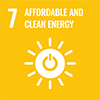Commencing Solar Power Generation at Two Domestic Sites (Japan - Pigeon)
2023.01.26
On December 26, 2022, as part of the ongoing efforts of the Pigeon Corporation (Headquarters: Tokyo) to help achieve carbon-free society, Pigeon’s Tsukuba office (Ibaraki) and Central Laboratory (Ibaraki) switched on their newly installed self-consumption solar power generation systems.
“Self-consumption solar power generation” refers to installing solar panels on a building’s roof or available space on the grounds, and then consuming the electricity generated on the premises rather than selling it back to the grid.
As a BCP* initiative, both offices also installed storage batteries. Energy stored in these batteries will be available for use during natural disasters, blackouts, or other times when electricity supply fails.
* Business Continuity Planning or BCP is the practice of planning ahead to identify the necessary actions at normal times and during emergencies such as natural disasters, fires, and terrorist attacks in order to minimize the damage and enable a rapid recovery.
The solar power generation system at the Tsukuba office are rated for 196 MWh per year (under ideal conditions), or roughly 30% of the energy used at the Tsukuba office. This is expected to decrease annual CO2 emissions by around 86 t.1
¹Figure calculated based on the emission factor of Tsukuba office’s external electricity provider.
The solar power generation system at Pigeon’s Central Laboratory are rated for 80 MWh per year (under ideal conditions), or roughly 20% of the energy used at the Central Laboratory. This is expected to decrease annual CO2 emissions by around 35 t.2
Furthermore, on August 8, 2022, Pigeon’s Central Laboratory began using renewable energy (electricity) from Evergreen Marketing (headquarters: Tokyo), which combines FIT electricity with an environmentally valuable non-fossil fuel certificate. As a result, our Central Laboratory now has net zero CO2 emissions from electricity.
²Figure calculated based on the emission factor of the electricity provider used by the Central Laboratory until August 2022.
In addition to installing these solar power generation systems, both offices have also responded to climate change by taking active steps to reduce greenhouse gas emissions, switching to LED lighting and upgrading air conditioning for greater efficiency.
We will continue to strive to reduce greenhouse gas emissions across the entire company and help achieve a carbon-free society.
- Home
- Sustainability
- Our Sustainable Actions
- Commencing Solar Power Generation at Two Domestic Sites (Japan - Pigeon)








